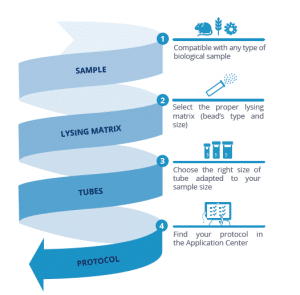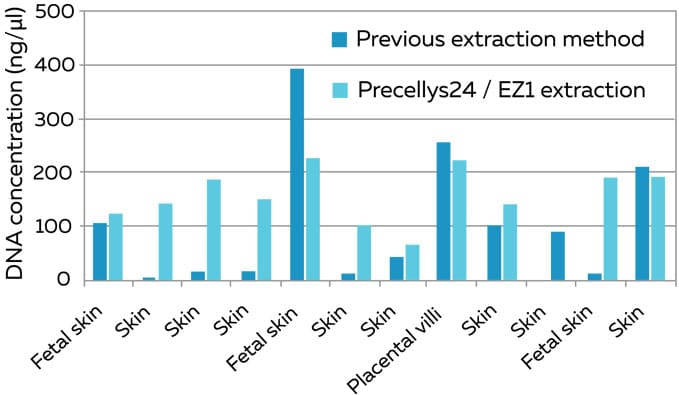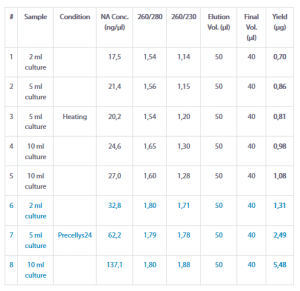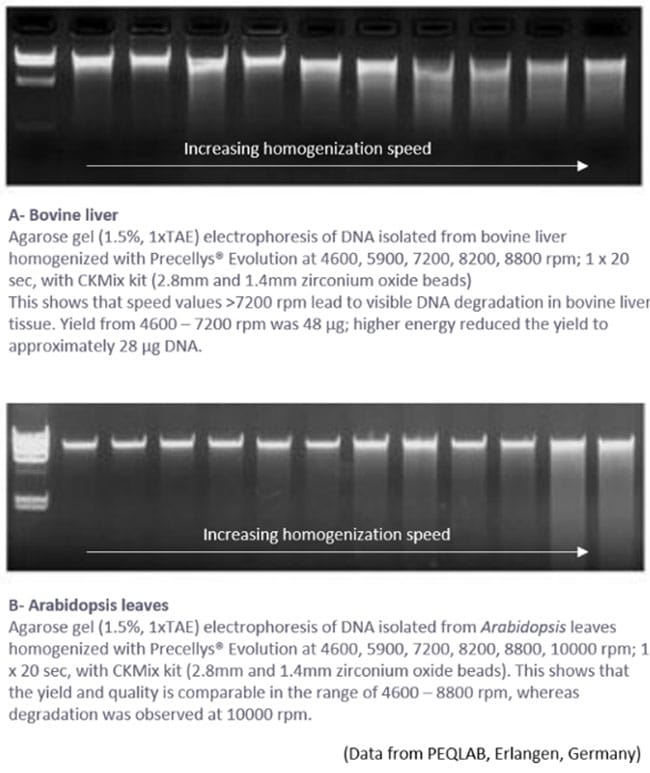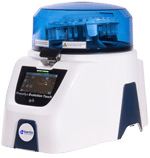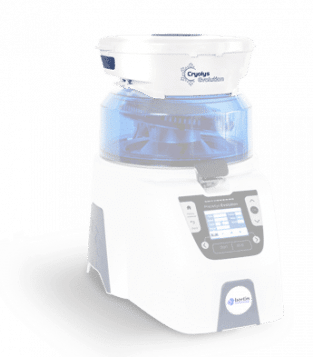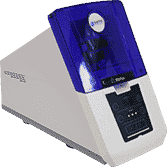DNA extraction
Obtaining high-quality, high-yield DNA from a sample requires an optimal homogenization process. Below, our team of scientists shares helpful tips to choose the right homogenization protocol for your DNA extraction
DNA analysis is a powerful tool to understand biological processes. Most DNA analysis techniques start with DNA extraction. In this process, DNA is liberated from a sample and purified. The liberation step consists in breaking open the cell membranes to expose the DNA. Soft tissue such as brain, liver, and pancreas are relatively easy to homogenize. However, hard tissues (e.g. tumors), elastic samples (e.g. gut and skin), and environmental samples (e.g. soil) present many sample preparation challenges for DNA extraction. These sorts of samples possess mechanical and structural properties that make homogenization procedures difficult to standardize. Furthermore, most complex biological materials contain PCR inhibitors and degrading enzymes.
A complete homogenization must be achieved to get a high DNA yield while maintaining the integrity of nucleic acids . For most applications, it is important to design a high throughput reproducible protocol for the homogenization step. Mechanical lysis, and more specifically bead-beating technology followed (or not) by protease digestion (Proteinase K, lysozyme) has been widely acknowledged as the gold standard method for sample homogenization and DNA extraction protocols. For this reason, Bertin Technologies has chosen the 3D bead-beating technology to power its wide range of homogenizers, the Precellys tissue homogenizers. Below, our top scientists have shared best practices for bead- beating homogenization to maximize the quality of the DNA obtained.
Download the Best practices in RNA & DNA sample preparation White Paper
Download the Best practices for DNA sample preparation White Paper
Biologists work on a variety of samples that vary widely in their physical structures and composition, from bacteria to plant and animal tissues. A large variety of DNA extraction kits on the market are designed to deal with all of these types of samples. Nonetheless, most of them require a homogenization step before DNA can be extracted successfully.
Our Precellys homogenizers are compatible with a wide variety of kits, including those that require the use of a lysing buffer and 2mL tubes filled with beads.
Bead-beating homogenization has been shown to improve the DNA yield recovery, as shown in Figure 1.
Figure 1: Comparison of DNA extraction efficiency between enzymatic lysing methodologies and the Precellys bead-beating homogenization technology.
If your DNA extraction kit does not already provide a bead-beating lysing step, see our Choosing your lysing kit page to find a reference adapted to the sample that you are working on.
Once a suitable bead-beating lysing kit has been chosen, the next step is choosing the best parameters for an efficient homogenization.
When working with small beads, it is important to carefully choose the speed and the duration of the homogenization cycle. These parameters affect the size of the obtained DNA fragments, as shown in Figure 2. This is particularly important when homogenizing bacteria. Bacteria are tough to disrupt and small glass beads are typically required to achieve efficient homogenization. We suggest always starting with homogenization cycles shorter than 30 seconds and moderate speed (i.e. 4200 rpm for Precellys 24 and 6000 rpm for Precellys Evolution).
Figure 2: Effect of increasing homogenization speed on the quality of DNA extractions using the Precellys bead-beating homogenization technology.
The resulting homogenate may sometimes contain contaminants such as proteins, polysaccharides, and polyphenols. Digestion of the sample with Proteinase K (cells, animal tissue) or Lysozyme (bacteria) is a good way to cleave contaminant proteins. The use of a CTAB buffer (containing cetrimonium bromide) facilitates the separation of polysaccharides when working with plant samples.
If you have any more questions, contact your local field application scientist who will be happy to recommend the best protocols for your samples. Our complete database of protocols can be found in our Application Center.
